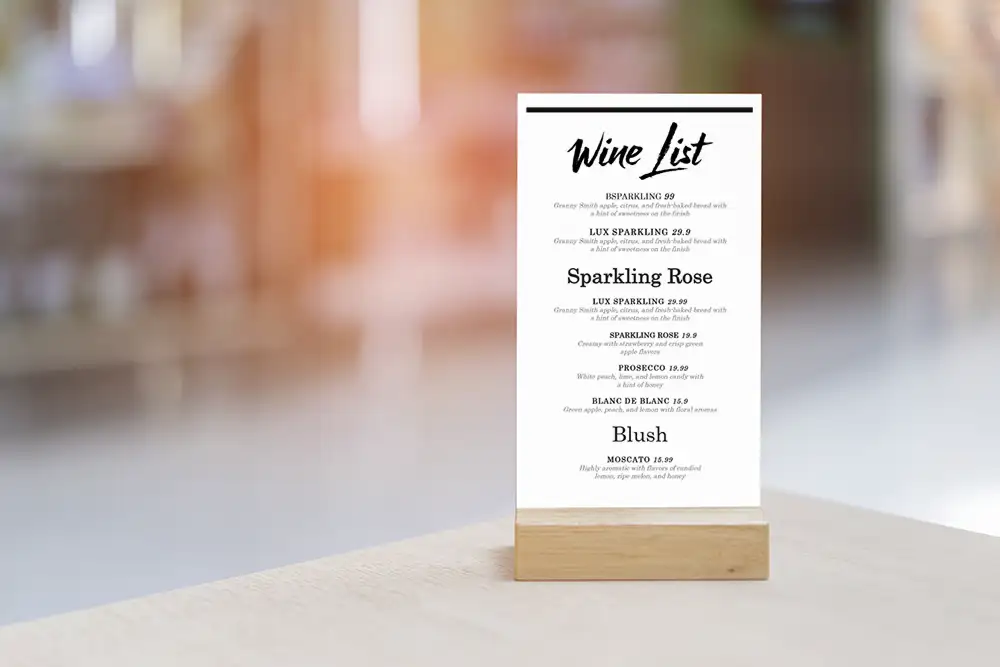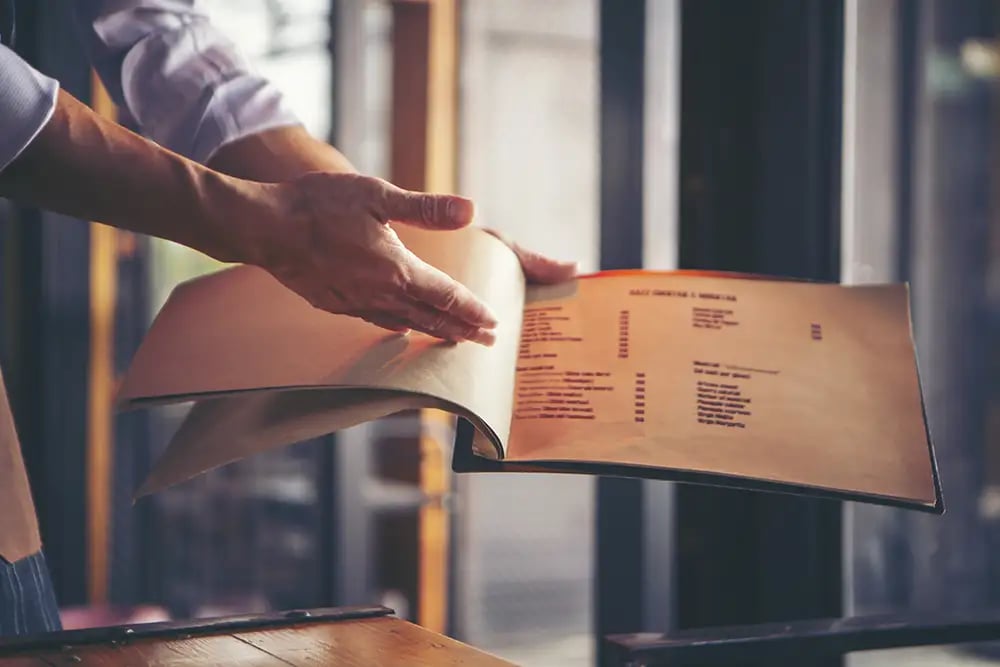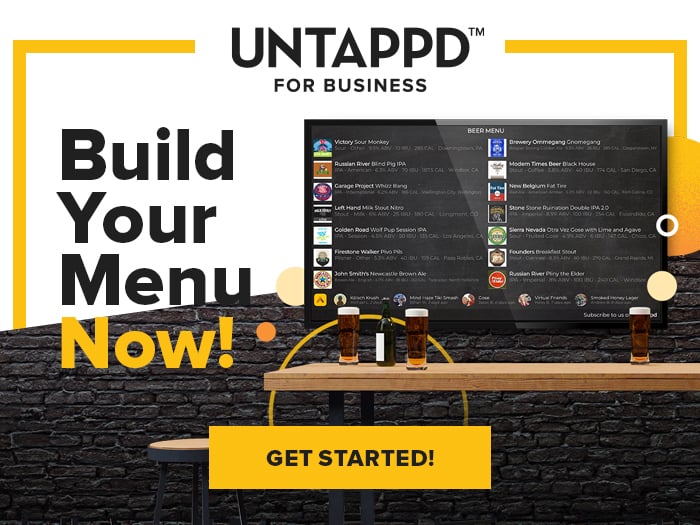Wine Pricing Guide for Restaurants

April 8, 2024

Curating the perfect wine list is an art; pricing those wines is a science.
The delicate dance between offering diverse and appealing wine varieties while ensuring profitability requires a strategic approach. This comprehensive guide will unravel the intricacies of pricing wine for your restaurant, bar, or business.
Whether you are a brand-new restaurant owner or an expert sommelier, understanding the factors that influence wine pricing is crucial for both customer satisfaction and the financial health of your establishment.
From integrating wine prices seamlessly into your menu strategy to deciphering the impact of production costs, this article will provide you with actionable insights and proven strategies. We'll explore how to strike the perfect balance between providing value to your patrons and optimizing your profit margins.
Let's uncork the secrets of effective wine pricing.
What We’ll Cover in This Piece:
The Top 7 Factors Influencing Restaurant Wine Pricing

Many scenarios can determine how you should consider the art of wine pricing at your establishment. Let’s review some key factors that can influence wine pricing:
Target Audience and Demographics
Understanding the preferences and spending capacity of your restaurant's target audience is fundamental. Consider the demographics of your patrons—whether they are wine enthusiasts seeking premium selections or individuals looking for budget-friendly options.
Production Costs and Markup
Factor in the cost of acquiring and storing the wine, as well as any associated operational costs. Determine an appropriate markup that covers these expenses while remaining competitive. Balancing cost and perceived value is crucial for profitability.
Brand Recognition and Prestige
The reputation of the wine brand significantly influences pricing.
Premium and well-known labels often command higher prices. Consider the prestige associated with certain wine brands and leverage their reputation to justify a premium on your menu.
Wine Rarity and Exclusivity
If your restaurant offers rare or exclusive wines, pricing can reflect the uniqueness of these selections. Limited availability and special features such as aged vintages can justify higher price points, attracting connoisseurs seeking distinctive experiences.
Competition in the Local Market
Conduct a thorough analysis of local competitors to gauge the market standard for wine pricing. Strive to offer competitive prices while maintaining the quality and uniqueness of your wine list. Differentiate your offerings to stand out in the local dining scene.
Economic Conditions and Consumer Trends
Be attuned to economic fluctuations and consumer trends.
During economic downturns, value-focused pricing may be more appealing, whereas, in prosperous times, patrons may be willing to indulge in higher-priced wine selections. Adapt your pricing strategy accordingly.
Seasonal and Regional Considerations
Consider seasonal variations in wine preferences and adjust your menu accordingly. Additionally, consider regional factors—the availability of local wines or the demand for specific varietals in your geographical area can influence pricing decisions.
Wine Integration with Menu Strategy

Pairing the right wines with your restaurant menu is an art.
Here are key steps to effectively integrate wine with your restaurant's menu strategy:
Understand Your Cuisine
Start by understanding the flavors, textures, and nuances of your restaurant's cuisine.
Different wine varieties complement various dishes. For example, light wines may pair well with seafood, while robust reds may complement hearty meat dishes.
Consider Dining Atmosphere
The ambiance of your restaurant plays a significant role in determining the types of wines you offer. A fine dining establishment may focus on a curated selection of premium wines, while a casual eatery might include approachable and affordable options to suit a more relaxed atmosphere.
Highlight Regional Pairings
Consider showcasing wines that complement the regional influences of your menu.
If your restaurant specializes in Italian cuisine, feature a selection of Italian wines that pair harmoniously with the dishes. This approach provides an authentic and thematic connection between the menu and the wine list.
Train Staff on Wine Knowledge
Ensure your staff is well-versed in the wine offerings.
Staff members should be able to provide recommendations based on customer preferences and the menu. Conduct training sessions to educate them about the flavor profiles of different wines and suggest pairings with specific dishes.
Promote Wine Pairing Specials
Encourage customers to explore wine pairings by featuring specials or promotions.
Consider offering a discounted wine flight that complements a tasting menu or suggesting wine pairings alongside signature dishes. This boosts sales and encourages customers to try new and exciting combinations.
Cost Considerations for Wine Pricing

Pricing wine in a restaurant involves more than just choosing a markup percentage.
Understanding the cost considerations is crucial for setting prices that are not only competitive but also ensure profitability.
Wholesale Purchase Costs
The cost of acquiring the wine from distributors or directly from wineries is the foundation of your pricing structure.
Negotiating favorable wholesale prices based on volume and establishing strong relationships with suppliers can positively impact your overall cost structure.
Storage and Cellaring Expenses
Proper wine storage conditions are essential for maintaining the quality of wines. Factor in the costs associated with temperature-controlled storage, as well as any investments in wine cellaring facilities. These expenses contribute to the overall cost of offering a well-maintained wine selection.
Waste and Spoilage
Wine is a perishable product, and some spoilage or waste is inevitable. Calculate an allowance for potential spillage, breakage, or spoilage due to factors like oxidation. Minimizing waste through efficient inventory management is crucial to controlling these costs.
Labor Costs for Service
Consider the labor costs of serving and handling wine.
If you have trained sommeliers or dedicated staff for wine service, include these labor expenses in your overall cost calculations. This ensures that the labor required to curate and present the wine selection is adequately covered in the pricing.
Glassware and Presentation
The presentation of wine, including the quality of glassware and any additional accessories, contributes to the overall experience. Invest in suitable glassware and accessories that enhance the enjoyment of the wine.
Include these costs in your pricing strategy to reflect the value-added aspects of the service.
Markup for Profitability
Once you've calculated all the associated costs, determine the desired markup percentage to ensure profitability.
Consider industry standards, your restaurant's positioning, and customer expectations when setting the final selling prices. Striking a balance between competitiveness and profitability is key.
Common Wine Pricing Strategies Based on Size

Determining the price of wine in a restaurant involves various factors, including container size.
Here are examples of how to structure wine pricing based on different container sizes:
Standard 750ml Bottle
For a standard 750ml bottle of wine, pricing can be based on the cost of the bottle from the supplier, associated expenses such as storage and service, and a desired markup for profitability.
For example, if the wholesale cost is $10 per bottle and you decide on a 3x markup, the selling price would be $30 per bottle.
Magnum (1.5L) Bottle
Magnum-sized bottles, with a capacity of 1.5 liters, are often perceived as special and can command a premium. Pricing for magnums can be higher than the equivalent volume of standard bottles.
Using a similar markup strategy, if the wholesale cost for a magnum is $20, a 3x markup would result in a selling price of $60.
Half-Bottle (375ml)
Half-bottles are a popular choice for those looking for smaller servings. You can price at a proportionate rate to the standard bottle.
For instance, if the wholesale cost for a half-bottle is $8, applying a 3x markup would yield a selling price of $24.
By-the-Glass
Pricing wine by the glass allows for flexibility and caters to customers who prefer smaller quantities. Calculate the cost per ounce or pour and apply a suitable markup.
For example, if the cost per ounce is $1 and you choose a 4x markup, a 6-ounce glass would be priced at $24.
Wine Flight
Offering wine flights are a great way to showcase variety. Determine the cost of the individual pours in the flight, considering the wholesale cost and associated expenses.
Applying a markup, a flight with three 3-ounce pours costing $3 each could be priced at $18.
What Is a Wine Split?

In the context of restaurant terminology, a wine split refers to dividing a standard-sized wine bottle into smaller individual servings for customers. This allows patrons to enjoy a single glass of wine without committing to purchasing an entire bottle.
Typically, a standard wine bottle contains 750 milliliters of wine. In a wine split, this full-size bottle is opened, and its contents distributed into smaller portions. The most common split sizes are 187.5ml (one-fourth of a standard bottle) or 375ml (half of a standard bottle).
Wine splits offer several advantages for customers and restaurants:
- Variety: Customers can enjoy a diverse selection of wines without committing to a full bottle, allowing them to explore different varietals and pairings.
- Flexibility: Restaurants can cater to a wider range of preferences by offering a variety of wines by the split. This flexibility enhances the overall dining experience.
- Waste Reduction: Opening a full bottle for a single glass reduces the risk of wine spoilage or waste. It allows restaurants to serve fresh wine to customers with minimal leftover inventory.
Wine splits are particularly popular in establishments with diverse wine programs, where the customers most likely want to try more than one wine without committing to multiple bottles.
By offering wine by the split, restaurants can cater to different tastes, occasions, and group sizes, creating a more inclusive and enjoyable atmosphere for wine enthusiasts.
Tips for Upselling Wine

To put it simply: Upselling wine in a restaurant contributes to increased revenue. This is a valuable practice for your serves to learn, understand, and implement during service.
Train Staff on Wine Knowledge
Ensure that your staff is well-versed in your wine offerings. Knowledgeable servers can confidently make recommendations based on customer preferences and menu choices, making the upselling process more personalized and appealing.
Recommend Food and Wine Pairings
Train your staff to recommend specific wines that elevate the flavors of the food, encouraging guests to explore premium or complementary options.
Encourage Guests to Try Wine Flights
Introduce tasting flights that showcase a variety of wines. This encourages exploration and allows guests to experience different styles and varietals.
Tasting flights create a sense of value and curiosity, making it easier to upsell additional glasses or bottles.
Highlight Limited-Time Specials
Create a sense of urgency and exclusivity by featuring limited-time wine specials.
Whether it's a rare vintage, a special blend, or a themed promotion, limited-time offers can entice customers to try something new and unique.
Provide Wine Recommendations for Special Occasions
Encourage upselling by suggesting wines suitable for special occasions. From anniversaries to birthdays to significant milestones, recommending a bottle of premium wine adds a memorable touch to a specific celebration.
Implement Bundle Offers
Consider creating bundled offerings that combine wine and food items. Something akin to a “happy hour” special.
Offering a package at a slightly discounted rate compared to individual purchases provides an opportunity to upsell.
Host Wine Tasting Events
Organize special wine-tasting events or evenings where customers can sample a variety of wines. Great event ideas like this one will attract wine enthusiasts to your establishment and provide you an opportunity to upsell bottles that customers particularly enjoyed during the tasting.
Promote Loyalty Programs
Implement a loyalty program or “mug club” that rewards customers for their wine purchases. This can include discounts on future wine orders, exclusive access to new releases, or even a complimentary tasting after a certain number of purchases, encouraging repeat business and upselling.
Wine Menu Building Solutions
Businesses looking to build and perfect their wine menus should explore a solution like Untappd for Business.
This premier menu-building platform enables bars, restaurants, and other businesses to craft their ultimate menu effortlessly and easily add wine from the world’s largest database. Selection can include a variety of information to help guests make informed decisions.
Once you create the menu, share it online, sync it to digital signage displays, and print it out on a variety of elegant menu templates.
A Final Word on Wine Pricing
As we navigate the intricate world of integrating wine into a restaurant's menu, it becomes evident that success and profitability are achievable through a strategic and customer-centric approach. By understanding your clientele, curating a diverse and well-balanced wine list, and aligning your offerings with the menu, you create an environment that caters to a broad spectrum of tastes and preferences.
Empowering your staff with wine knowledge enhances the customer experience, fostering a sense of confidence and trust. Regularly updating your wine list, implementing strategic pricing strategies, and utilizing technology for efficient inventory management are essential steps toward maintaining freshness and maximizing profitability. Adding a robust menu-building solution and digital signage can add the finishing touch to perfecting your wine menu.
Hosting events, tastings, and promoting wine pairing specials creates excitement and provides opportunities for upselling and building a community around your wine program. Monitoring sales data and being responsive to customer trends allow you to adapt and refine your offerings, ensuring a dynamic and engaging experience for patrons.
The success and profitability of a restaurant's wine program lie in the delicate balance of understanding the market, meeting customer expectations, and staying adaptable to industry trends. By following these tips, you can create a wine program that contributes significantly to the overall success of your establishment.
Note: This article was generated with the help of ChatGPT. It was edited, enhanced, and published by humans.
Build Beautiful Wine and Food Menus With Ease
Untappd For Business is enabling businesses to effortlessly build world-class digital and print menus complete with wine, craft beer, liquor, and food.
